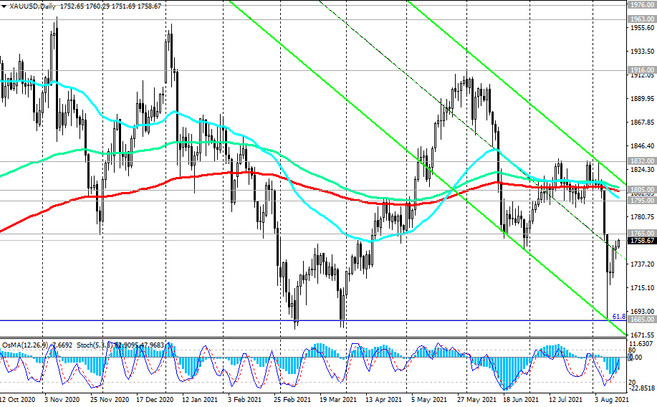Apart from the surge in volatility last Wednesday, when US inflation indicators for July were published, this week was much calmer than the previous one, at the end of which monthly data from the US labor market were published.
The dollar, as a whole, kept the positions it won last week. Although, at the moment, only the first half of the trading day has passed and the American trading session is ahead, most likely, the DXY dollar index will end this week with, albeit with a symbolic, but increase of several points.
As of this writing, DXY futures are traded near 92.94 mark, 14 pips above last week's close.
Of noteworthy economic data to be released today is the preliminary consumer confidence index from the University of Michigan.
This indicator reflects the confidence of American consumers in the economic development of the country. A high level indicates economic growth, while a low level indicates stagnation. Previous values of the indicator: 81.2 in July, 85.5 in June, 84.9 in March, 76.8 in February, 79.0 in January 2021. This indicator is expected to be released for August with the same value as for July. Despite the fact that in the period before the coronavirus pandemic, the values of this indicator were near the 100 mark, it can still be said that, despite the not yet won victory over the coronavirus in the United States and the world, there is a trend towards a gradual recovery in the growth of the indicator. If the data is confirmed or turns out to be better than the forecast / previous value, then the dollar is likely to strengthen. The data significantly worse than the forecast will negatively affect the dollar in the short term. The publication of this index is scheduled for 14:00 (GMT).
In general, the data coming from the US lately speak of the ongoing recovery of the American economy, which is positive for the dollar. High inflation and the ongoing recovery in the US labor market are reinforcing investor expectations that the Fed may start winding down stimulus programs earlier than planned. And more and more often, a number of representatives of the US leadership are signaling about the likelihood of such a scenario.
If the rate of inflation does not slow down significantly soon, then the Fed will still be forced to pay attention to this. The likelihood of a rate hike in early 2023 is growing, and the sooner the Fed begins to reduce the volume of asset purchases, the sooner the necessary conditions for the rate hike will be met, economists say.
At the end of August, Jackson Hole will host the annual Fed-sponsored Economic Forum. If Federal Reserve Chairman Jerome Powell presents a plan to curtail the asset-buying program at the Jackson Hole conference, or specifies a date or time frame for such curtailment, then the case for further strengthening of the dollar will become even more convincing.
In this regard, the short position in gold again becomes relevant. As you know, it does not bring investment income, and is in demand mainly as a hedging asset during periods of uncertainty and soft monetary policy of world central banks. Its quotes are extremely sensitive to changes in the interest rates of the Fed and other major central banks in the world. On the one hand, growing inflation and a more aggressive delta strain of coronavirus spreading around the world create prerequisites for the growth of the XAU / USD pair. On the other hand, for the participants of the precious metals market, it seems that the prospect of curtailing the stimulating programs of the Fed is coming to the fore. And the more often such signals come from the FRS representatives, supported by fresh and strong macro data on the USA, the more active will be the build-up of the volume of short positions in gold.






